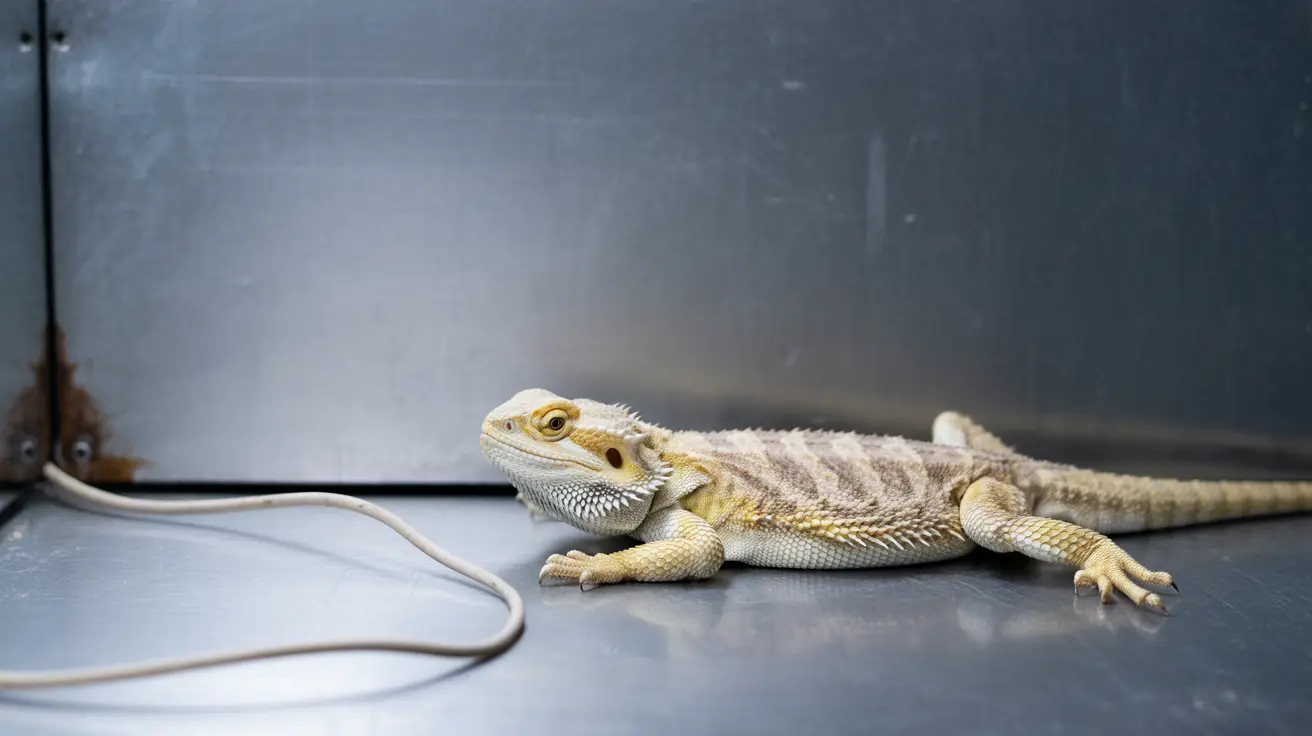L’intoxication au plomb chez le chat, connue également sous le nom de saturnisme chez le chat, est une affection grave qui peut avoir des conséquences dévastatrices sur la santé de votre félin. Bien que relativement rare, ce type d’intoxication représente une urgence vétérinaire et peut s’avérer mortelle sans prise en charge rapide. Comprendre les causes, les symptômes et les solutions de traitement est essentiel pour tout propriétaire, notamment ceux qui résident dans des habitations anciennes où les risques d’exposition au plomb sont accrus.
Ce guide complet vous propose de tout savoir sur le saturnisme félin : comment détecter les signaux précoces, reconnaître les causes plomb dans l'environnement du chat, et adopter les bons gestes pour prévenir intoxication plomb chat dans votre foyer.
Sources courantes d’exposition au plomb
Les chats peuvent être exposés au plomb via plusieurs éléments de leur environnement. Les principales sources exposition plomb chat incluent :
- Les écailles ou la poussière de vieilles peintures, surtout dans les maisons construites avant 1978 (peinture plomb et santé chat)
- Le sol contaminé autour des bâtiments anciens (danger vieux bâtiments pour chats)
- Les canalisations ou robinetteries en plomb (plomb eau potable et chats)
- Certains jouets importés ou gamelles en céramique
- Les plombs de pêche et munitions
- Les batteries au plomb
- Les matériaux de vitrail
Les chats ayant un accès à l’extérieur sont davantage exposés aux risques plomb pour animaux domestiques, notamment à la poussière ou au sol pollué en ville. Leurs habitudes de toilettage méticuleuses augmentent le danger car ils peuvent ingérer des particules de plomb en se léchant le pelage après un contact.
Reconnaître les signes d’intoxication au plomb
L’intoxication chronique plomb chat peut perturber de nombreux systèmes de l’organisme, provoquant des symptômes qui peuvent s’installer progressivement ou surgir brutalement selon le degré d’exposition. Les principaux signes empoisonnement plomb félin à surveiller sont :
Signes digestifs
- Perte d’appétit
- Vomissements
- Diarrhée ou constipation
- Douleurs abdominales
Symptômes neurologiques
- Convulsions
- Désorientation
- Comportement anormal intoxication plomb chat, comme l’agressivité ou l’apathie
- Mauvaise coordination
- Cécité
- Pression de la tête contre les murs
Autres signes d’alerte
- Gencives pâles
- Salivation excessive
- Tremblements musculaires
- Perte de poids
- Modification des habitudes de boisson ou d’urination
Diagnostic et options de traitement
Si vous suspectez une intoxication, il est primordial de contacter vétérinaire intoxication plomb sans délai. Le diagnostic saturnisme chez le chat passe généralement par :
- Un examen clinique approfondi
- Des tests sang pour plomb chats
- Des radiographies à la recherche d’objets contenant du plomb avalés
- Un démarrage du traitement, adapté à la gravité de la situation
Le traitement intoxication plomb chat repose sur :
- La chelation thérapie chat saturnisme, qui aide à éliminer le plomb (chélateurs spécifiques)
- Des soins de soutien avec perfusion (IV)
- Des médicaments anti-convulsivants si besoin (plomb et troubles neurologiques chat)
- Une décontamination digestive
- Un soutien nutritionnel
Stratégies de prévention
Prévenir intoxication plomb chat est nettement plus simple et sûr que de traiter l’intoxication installée. Quelques mesures de prévention empoisonnement domestique chat à adopter :
- Nettoyer régulièrement pour limiter l’accumulation de poussière (prévenir intoxication plomb chat)
- Faire analyser l’eau pour détecter une éventuelle contamination au plomb (plomb eau potable et chats)
- Retirer ou recouvrir les anciennes couches de peinture
- Opter pour des gamelles et jouets sans plomb
- Éloigner les chats des zones de travaux ou de rénovation (poison chat maison ancienne)
- Réaliser des bilans vétérinaires réguliers
Questions Fréquentes
Quels sont les symptômes du saturnisme chez le chat ?
Les symptômes intoxication plomb chat sont : perte d’appétit, vomissements, diarrhée ou constipation, douleurs abdominales, convulsions, apathie ou agressivité, désorientation, mauvaise coordination, cécité, pressions de la tête, gencives pâles, salivation excessive, tremblements et perte de poids. Ils peuvent apparaître progressivement ou soudainement.
Les signes peuvent inclure vomissements, diarrhée, douleurs abdominales, convulsions, troubles du comportement, perte d'appétit et tremblements.
Oui, ces signes sont typiques du saturnisme chez le chat et correspondent à une atteinte digestive et neurologique due au plomb.
Comment un chat peut-il être exposé au plomb ?
Le chat peut être exposé par l’ingestion de peinture ancienne, d’eau contaminée via des canalisations au plomb, de poussière ou sol pollué, ou d’objets contenant du plomb tels que jouets importés, batteries, ou matériaux de bricolage.
Quels risques présentent les maisons anciennes pour les chats ?
Les maisons anciennes présentent un risque accru d’empoisonnement à cause des vieilles peintures, des canalisations en plomb et de la poussière contaminée (danger vieux bâtiments pour chats).
Quels examens permettent de diagnostiquer une intoxication au plomb chez le chat ?
Le diagnostic du saturnisme félin repose sur une analyse sanguine du taux de plomb et, si besoin, sur des radiographies pour repérer d’éventuels corps étrangers ingérés (tests sang pour plomb chats).
Quels traitements vétérinaires existent pour le saturnisme félin ?
Le traitement inclut la chelation thérapie chat saturnisme (chélateurs), l’administration de perfusions pour évacuer le plomb, la gestion des convulsions, la décontamination digestive et un soutien nutritionnel.
La contamination au plomb est-elle fréquente chez les chats en France ?
L’intoxication plomb chez le chat reste rare mais elle peut survenir, notamment dans les zones urbaines et les habitats anciens.
Quels comportements doivent alerter un propriétaire de chat ?
L’apathie, la désorientation, les convulsions, la perte d’appétit ou tout changement soudain de comportement doivent alerter et motiver une consultation vétérinaire rapide (comportement anormal intoxication plomb chat).
Comment prévenir l’exposition au plomb pour un chat ?
Sécurisez le logement, éliminez ou recouvrez les sources anciennes de plomb tels que les peintures, faites analyser l’eau, privilégiez les objets sans plomb et limitez l’accès du chat aux zones à risque (comment protéger chat du plomb).
L’eau du robinet peut-elle exposer mon chat au plomb ?
Oui, si les canalisations sont anciennes ou en plomb, il est conseillé de tester l’eau pour réduire les risques (plomb eau potable et chats).
Que faire en urgence si mon chat est intoxiqué au plomb ?
Consultez immédiatement un vétérinaire : ne donnez ni eau ni nourriture, gardez l’environnement calme, et indiquez les symptômes et les sources d’exposition suspectées (que faire chat intoxiqué plomb).






